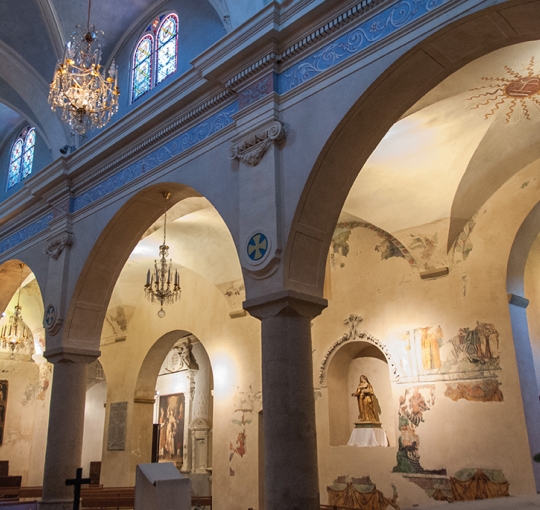
Monuments & Sites
Biot is full of emblematic places and remarkable monuments which contribute to the authenticity of its Provencal charm. The church and the chapels, but also the squares and the old doors, are all vestiges of a rich and fascinating history. Take a trip back in time and admire the sites and buildings that have been preserved over time.

L’église Sainte-Marie-Madeleine
Rebuilt in the 15th century on the foundations of an old Romanesque church, and classified as a Historic Monument in 1984, the church of Sainte-Marie-Madeleine is the jewel in the crown of Biot's historical and religious heritage. It also has two particularities that make it unique: the presence of two doors and the fact that steps go down to the nave instead of up.
discover
La place des Arcades
At the very heart of the village, the Place des Arcades is the place to be in Biot from a heritage point of view. Originally a Roman castrum, then the seat of the Templars, the square now has the distinctive appearance of Ligurian architecture, which it has had since Biot was repopulated by the Italians in the 15th century.
discover
La porte des Tines
In the late Middle Ages, the village was closed to invaders by three gates, one of which has been destroyed. The Porte des Tines still stands in the middle of a crossroads of cobbled, flower-filled pedestrian streets, creating a charming, steep space. The hinges that allowed the wooden door to close are still visible...
discover
La porte des Migraniers
Better preserved than the Porte des Tines, the Porte des Migraniers is located on the calade of the same name, which leads up to the Place des Arcades. Observe the remains of a tower and the covered way that once passed over the gate.
discover
Saint-Roch Chapel
With its oratory-like appearance, the chapel of Saint Roch dates back at least to the 16th century, but the building may be even older. Now owned by the municipality of Biot, it was dedicated to Saint Roch so that he would protect the village from plague epidemics.
discover
Notre Dame Chapel
There are numerous references, from 1604 onwards, to the Notre-Dame chapel, which first belonged to a private individual and then to the cloth weavers, who erected an altar to Saint Barnabas and made it into a replica of the Saint Julien chapel.
